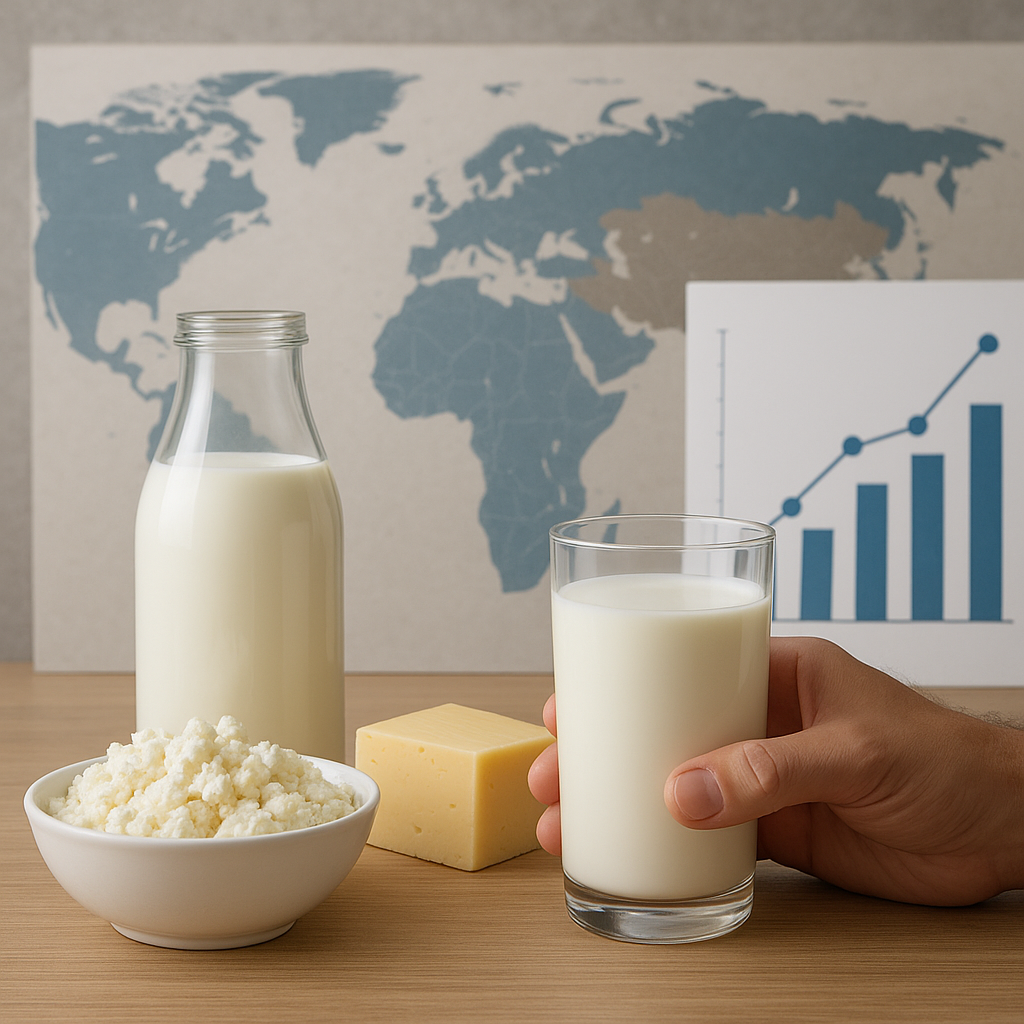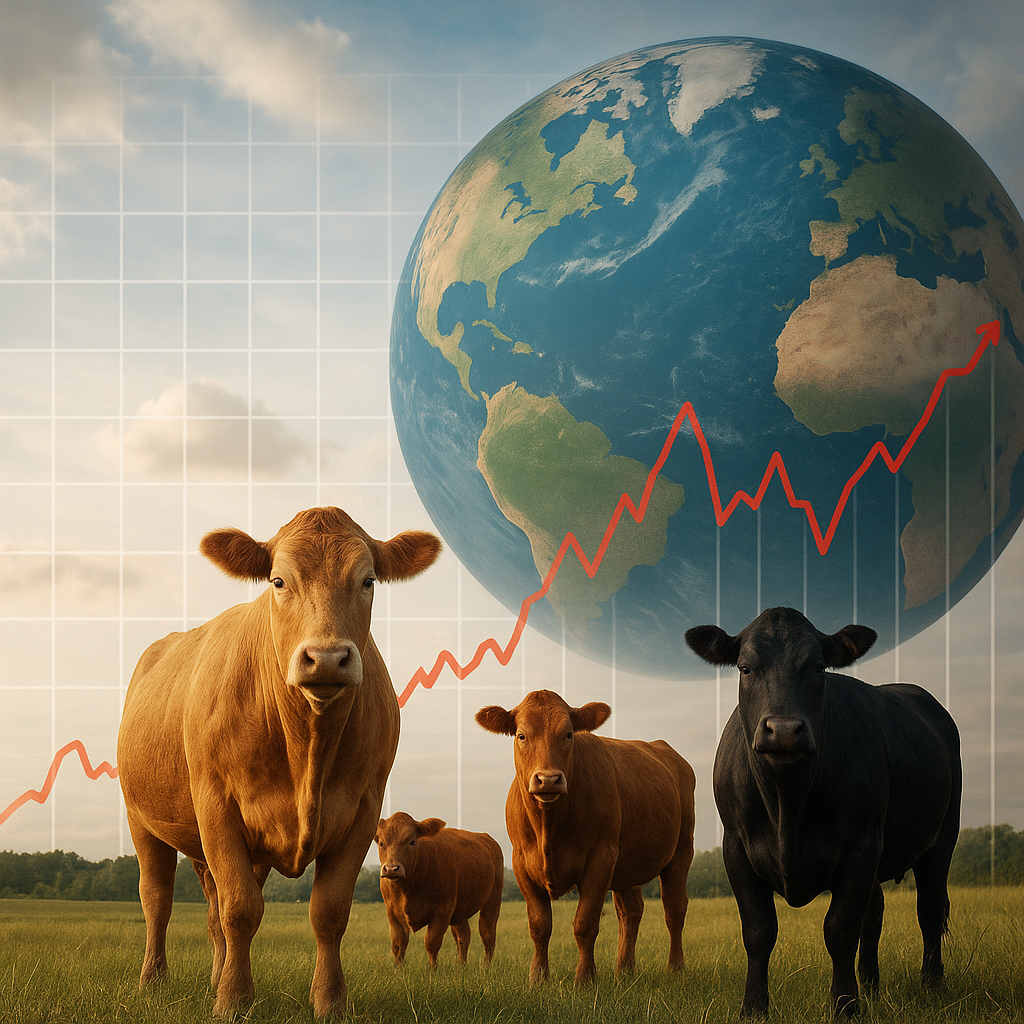The global dairy sector stands at the intersection of traditional farming practices and cutting-edge innovation. Rapid changes in consumer behavior, shifting trade policies, and the quest for sustainability have created a dynamic environment. This overview explores key market drivers, regional trends, and the future outlook for one of agriculture’s most essential industries.
Global Dairy Market Dynamics
The global dairy landscape has evolved significantly over the past decade. From modest growth rates in mature markets to explosive expansion in emerging economies, the interplay between supply and demand shapes production strategies. The industry’s performance hinges on several critical factors:
- Production Capacity – Technological advancements in milking equipment and genetics have boosted yield per cow, raising overall output.
- Consumption Patterns – Shifts toward high-protein diets and specialty dairy products influence market segmentation.
- Trade Flows – Export and import policies, tariffs, and free trade agreements determine global price competitiveness.
- Price Volatility – Fluctuations in feed costs, energy prices, and currency rates impact farm gate prices.
- Sustainability Practices – Carbon footprint reduction, water management, and animal welfare standards are increasingly mandated by regulators and demanded by consumers.
Supply Chain Transformations
Modern dairy supply chains are no longer linear. The integration of digital platforms, blockchain for traceability, and predictive analytics has redefined operational efficiency. Key trends include:
- Real-time monitoring of herd health via IoT devices
- Automated logistics and cold chain optimization
- Direct-to-consumer distribution models
Enhancing transparency throughout the supply chain not only boosts consumer trust but also reduces waste through precise inventory control and route planning.
Economic Drivers and Market Forces
Strong demand for value-added dairy products—such as specialty cheeses, yogurt with live cultures, and lactose-free beverages—has encouraged greater investment in research and development. Meanwhile, traditional milk sales still account for a significant share of revenue, particularly in developing regions. Price sensitivity remains high in low-income countries, where dairy affordability is a major concern. Conversely, affluent societies are willing to pay premiums for organic and gourmet items.
Regional Trends and Consumption Patterns
Regional variations in dairy production and consumption reveal diverse market realities. Each geography has its unique drivers, regulations, and consumer preferences:
North America and Europe
These mature markets face modest volume growth but high maturation in terms of value. Innovation focuses on health-oriented products, such as high-protein, low-fat, and probiotic dairy lines. Sustainability commitments are particularly stringent, with many producers aiming for carbon neutrality by 2050. Key developments include:
- Large-scale adoption of renewable energy on farms
- Implementation of precision feeding to reduce methane emissions
- Expansion of plant-based dairy alternatives alongside traditional offerings
Asia-Pacific
The Asia-Pacific region has emerged as the fastest-growing market, driven by rising disposable incomes, urbanization, and changing diets. Nations such as China and India are transitioning from net importers to major producers and exporters of dairy commodities. Government subsidies and modernization programs support smallholder farmers to improve yield through better breeds and feed quality. Consumption of milk powder, cheese, and yogurt is on the rise, positioning the region as a vital growth engine.
Latin America and Africa
These regions offer significant untapped potential. While per capita consumption remains below global averages, growth prospects are fueled by population growth and increased nutritional awareness. Challenges include inadequate infrastructure, limited cold chain capacity, and vulnerability to climatic shocks. Collaborative initiatives between public agencies and private enterprises aim to enhance farm-level efficiency and access to finance. Investments in training and cooperative models help smallholders scale operations and engage in export markets.
Drivers, Challenges, and Future Outlook
Looking ahead, the dairy industry will navigate a complex matrix of opportunities and obstacles. Understanding the interplay of key drivers and adopting strategic responses will determine success.
Innovation and Technological Adoption
Emerging technologies hold promise for boosting productivity and resource efficiency:
- Genomic selection to enhance herd genetics
- Artificial intelligence for predictive health monitoring
- Automated milking systems to reduce labor costs
Investment in Research & Development is crucial for developing novel dairy ingredients, improving shelf life, and creating functional foods that meet evolving consumer demands.
Sustainability and Environmental Stewardship
Reducing the carbon footprint of dairy operations is a priority. Key strategies include:
- Adoption of renewable energy sources
- Implementation of anaerobic digesters to manage manure
- Precision agriculture to optimize water usage
Regulatory frameworks in major markets increasingly mandate strict reporting on greenhouse gas emissions, driving producers to innovate or face penalties.
Market Access and Trade Policy
Global trade remains sensitive to geopolitical tensions and protectionist measures. To navigate this, stakeholders must:
- Diversify export destinations to mitigate risks
- Engage in bilateral and multilateral trade agreements
- Comply with stringent sanitary and phytosanitary standards
Better alignment between producer organizations and government bodies can facilitate smoother market entry and sustained export growth.
Consumer Preferences and Health Trends
Awareness of health and wellness continues to shape dairy consumption. Plant-based alternatives challenge traditional dairy but also create opportunities for hybrid products that combine dairy with plant proteins. Brands that emphasize transparency in sourcing, animal welfare, and nutritional benefits will gain competitive advantage. Emphasizing the intrinsic value of dairy’s complete amino acid profile can capture health-conscious segments.
Challenges and Risk Management
Dairy producers face multiple risks:
- Feed price volatility due to weather events and global commodity markets
- Labor shortages and rising wages in key producing regions
- Animal diseases and biosecurity threats
Adopting risk mitigation tools such as futures contracts, insurance products, and diversified herd management can help buffer against unforeseen shocks.
Pathways to Growth
To sustain growth, industry participants should prioritize:
- Vertical integration for greater control over quality and margins
- Value chain collaboration to streamline logistics and reduce costs
- Digital marketing strategies to reach new consumer segments
- Strategic partnerships for technology transfer and capacity building
A concerted focus on export development, innovation-driven value addition, and sustainability will set the stage for the dairy sector’s prosperous future.



